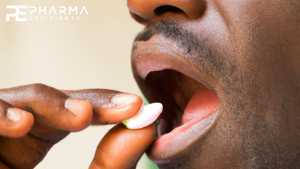Supersaturating lipid-based solid dispersion of atazanavir provides enhanced solubilization and supersaturation in the digestive aqueous phase

Understanding and controlling the drug solubilization in digestive environment is of great importance in the design of lipid based solid dispersion (LBSD) for oral delivery of poorly aqueous soluble drugs. In the current study we determined the extent of drug solubilization and supersaturation of supersaturating lipid based solid dispersion which is governed by formulation variables like drug payload, lipid composition, solid carrier properties and lipid to solid carrier ratio. Initially, the impact of lipid chain length and drug payload on drug solubilization in lipid preconcentrate and dispersibility were evaluated to design liquid LbF of the model antiretroviral drug, atazanavir. The temperature induced supersaturation method enhanced the drug payload in medium chain triglyceride formulation at 60 °C. Further, the selected liquid supersaturated LbF was transformed into solid state LbF by employing different solid carriers including silica (Neusilin® US2 and Aerosil® 200), clay (Montmorillonite and Bentonite) and polymer (HPMC-AS and Kollidon® CL-M).
Highlights
Temperature induced supersaturation method enhanced the drug payload in lipid based formulation comprises of medium chain triglyceride lipid and surfactant/co-solvent.
ATZ was successfully adsorbed into pores and/or on surface of solid carriers in a non-crystalline state.
The effect of different solid adsorbents on drug desorption and solubilization in aqueous digestive phase was investigated using pH-stat lipolysis method.
Dual function solid carrier like HPMC-AS significantly enhanced the drug supersaturation in intestinal digestive media.
The fabricated LBSDs were evaluated for solid state characterization to identify the physical nature of drug. In vitro digestion studies were conducted using pH-stat lipolysis method to assess the supersaturation propensity in aqueous digestive phase. Results revealed that LBSDs with silica and polymer carriers showed maximum drug solubilization throughout experiment compared to liquid LbF. The ionic interaction between drug-clay particles significantly reduced the ATZ partitioning from clay based LBSDs. LBSDs with dual purpose solid carrier like HPMC-AS and Neusilin® US2 offers the potential to improve drug solubilization of ATZ for physiologically relevant time. Lastly, we conclude that evaluation of formulation variables is crucial to achieve optimal performance of supersaturating LBSD.
Read more
Smritilekha Mondal, Arvind Sirvi, Karan Jadhav, Abhay T. Sangamwar, Supersaturating lipid-based solid dispersion of atazanavir provides enhanced solubilization and supersaturation in the digestive aqueous phase, International Journal of Pharmaceutics, 2023, 122919, ISSN 0378-5173, https://doi.org/10.1016/j.ijpharm.2023.122919.
Read our overview article on ODT here


